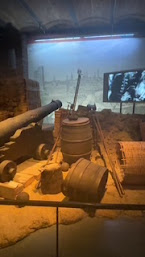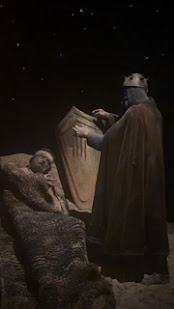Museu d'Historia de Catalunya, Barcelona
This week, we decided to go in instead of walking outside the buildings and sightseeing. I visited the Museu d'Historia de Catalunya, and wow, I didn't expect it to be so informational about both of my classes. A lot of different material showed up, such as questions about Catalonia's identity, citizenship, urban life, and power. The exhibits basically walked me through Catalonia's whole political identity crisis, and I couldn't stop thinking about what it means to belong somewhere that's always pushing back against the idea of being just one thing- Spanish, Catalan, national, independent, or not.
One of the most powerful exhibits talked about how Catalonia regained political autonomy in 1977, after Franco's dictatorship ended. The museum described this as the longest period of self-rule since 1714, and emphasized how autonomy allowed the Catalan government to invest in social welfare, education, and public participation. In POL 150, to be considered a "state," you need a defined territory, population, government, and sovereignty. Catalonia checks most of those boxes, but it still does not fully qualify, which is a little mind-boggling when you realize how strong the identity here is. I found myself wondering, can a place feel like a state even if it is technically not? The museum also has a section on urban development during Catalonia's industrial boom in the 1830s. According to the display, the bourgeoisie (middle-class industrialists) helped shape not only Catalonia's economy but also its cities, investing in theaters, civic centers, and even neighborhood layouts. This tied right into my research on how urban planning reflects political and social values. This reminded me as well that cities aren't just designed for function, they reflect the people who made them.
One moment that stuck with me was reading about the 1934 Catalan independence declaration and how it was crushed almost immediately by the Spanish state. The president at the time, Lluis Company, was imprisoned, and autonomy was suspended. This reminded me of the discussion in POL 150- how liberalism and nationalism can clash with conservatism. Expecially when a region wants more control over another.
More than anything, the museum made me rethink how people experience citizenship differently depending on where they are. Back in the U.S, we tend to think of citizenship as legal stuff such as voting, taxes, and a passport. But in Catalonia, it feels like citizenship is emotional, tied to language, culture, memory, and even spaces. In my research, I talk about how city design reflects priorities, and in Barcelona, public space seems built for gathering, celebrating, and participating. Makes me wonder how U.S cities would look like if we planned them with identity and citizenship in mind, not just cars and commerce?





Comments
Post a Comment